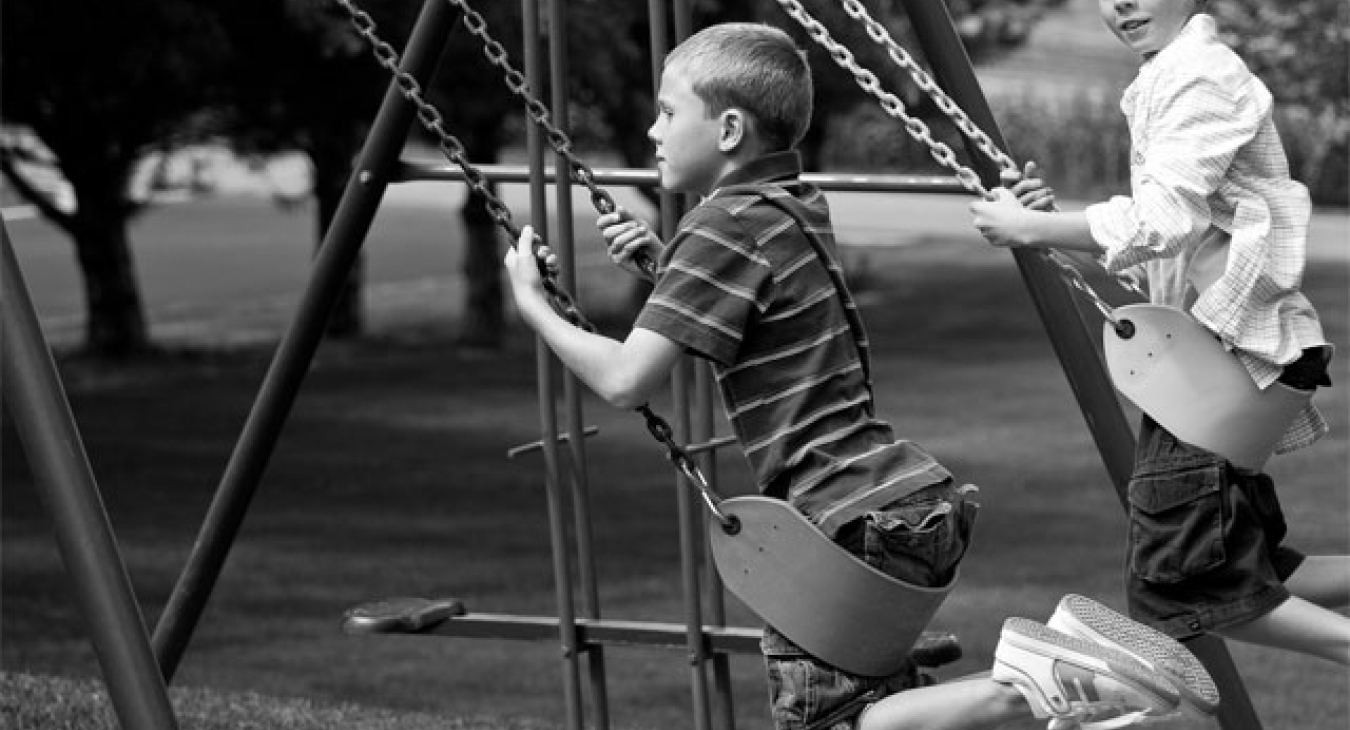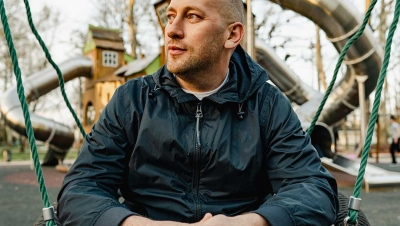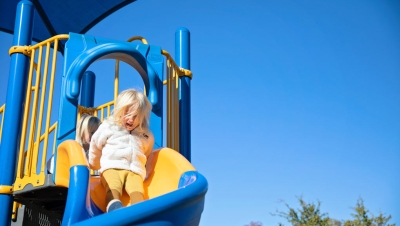Why is Risk and Challenge Disappearing from our Children’s Play Environment?
The lack of risk and challenge in our children’s play environment has become a hot topic as more and more risky and challenging play events are removed or not even being considered for today’s play environments.
Anybody who cares about improving children’s play spaces could benefit from a little better understanding of the importance and effect RISK and CHALLENGE can make in their personal development. Children face real risk and danger every day of their lives. Crossing a busy street or riding a bicycle to school can put them in harm’s way. It is interesting that for the most part we all accept these risks. We have to if our children are to develop and learn to cope with making their own decisions each and every day as they face new challenges and the safety issues each challenge represents.
Children learn from their personal and practical day to day experiences. They learn valuable lessons when they make good and bad decisions, but hopefully they are being closely watched by an adult who regulates and limits the scope of their play environment. This is how I remember my childhood.
Our children’s play environment should be a creative and stimulating learning laboratory; however, in many instances they have become over sanitized. This results in the elimination of most moving equipment, upper body equipment, and much of the more challenging play opportunities available in the marketplace.
I think the reason for this situation appears to be government administrators and policymakers choosing to take the easiest path towards the reduction or avoidance of potential injuries and the associated expenses that are believed to come with these unfortunate accidents. I urge everyone involved in the operation and management of our children’s play environments to think about some of the consequences from implementing such a conservative course of action.
I believe it is the collective failure of our play providers to meet the minimum industry standards for these areas. Couple that with the lack of adequate inspection, maintenance, and repairs and you have a formula for many of the injuries and costs associated with defending the parties named in the resulting lawsuits. The perceived financial losses from a potential lawsuit resulting from a broken arm or leg seem to drive other well-intended play providers to follow the path of avoiding any potential problem in the first place.
This course of action leads in many cases to the implementation of a more conservative risk evasive management policy, and the implementation of this policy results in the “dumbing down” of our children’s play environment. Eliminating more risky or challenging play opportunities does not make the area safe. While a child’s safety is always a primary driving force in the decision making process, it is not going to guarantee a safe environment. Children will continue to use their environment in unintended ways. Often boredom leads to misuse and other unacceptable behaviors.
Our goal should be to eliminate known hazards while creating a fun challenging free play environment that meets the developmental needs of the intended user groups. Part of the design process should be a risk assessment by the owner and designer. This process requires the designer and owners’ understanding of who will be using the area and how the area will be used while considering the intended design use of the area and the reasonable foreseeable misuse of the play environment.
Currently there are no federal laws regulating playground safety other than the U.S. Department of Justice 2010 Standard for Accessible Design. This law references ASTM International standards for public playground surface system performance requirements for the accessible route and when this route falls within the equipment use zones. These standards are ASTM F1292, F1487, and F1951. F1292 is related to impact attenuation, F1487 gives the minimum surface area requirements around the equipment where falls are likely to occur, and F1951 gives some guidance to assess accessibility issues related to propulsion and maneuverability for a wheelchair user to go across the accessible route. Owners need to use care in assessing the results of this test method as it relates to the playground impact attenuating surface system and the needs of the wheelchair user.
In addition to the impacts these standards have on playground design form and function there are voluntary standards and guidelines that are the best industry practices to follow when it comes to not just the form and function of the play environment but the safety of the intended users. These must be applied to the design and manufacture of public play equipment, its age appropriateness, equipment layout, signage requirements, installation, maintenance, inspection, and documentation. The two primary publications are the current 2010 Public Playground Safety Handbook by the U.S. Consumer Product Safety Commission and the ASTM F1487-11 Standard Consumer Safety Performance Specification for Playground Equipment for Public Use.
The challenge facing the owner of a public playground or the designer of the facility is to reduce the number and severity of playground hazards while providing essential risk-taking activities. It appears the marketplace is struggling with their duty to meet the above-stated challenge because of their own interpretation of what types of risks are acceptable and necessary versus what constitutes a hazard.
Each year there are an estimated 220,000 playground-related injuries in the United States alone. These injuries range from minor injuries with no long term residual effects to very seriously debilitating injuries and unfortunately even death. Over seventy-five percent (75%) of these accidents occur on public playgrounds with nearly eighty percent (80%) of these injuries involving a fall. Falls, whether to the underlying surface or onto another piece of equipment, continue to be the most common cause of injuries on public playgrounds. Other injuries include: impacts with stationary and moving equipment (11%), entanglement, entrapment, crush/shear, and laceration type injuries (10%). The most common cause of fatalities on playgrounds is entanglement of loose clothing, strings or ropes, and wearing bicycle helmets on the playground.
There are many factors that contribute to these injuries. The two most significant factors are related to unintended use/poor or no supervision (40%) and lack of or improper maintenance (40+%). Careful planning and regular routine maintenance by a trained inspector can greatly reduce the possibility and probability that serious injuries will occur. A proactive approach to play area management is essential to your success.
 Unnecessary risk taking is not one of the leading factors resulting in most of these injuries. Some risk taking is commonly involved in everything we do, and this is especially true in the day to day life of a child. With risk and challenge comes some failure resulting most often in some form of minor injury, and this should not be looked at as a bad or unacceptable outcome.
Unnecessary risk taking is not one of the leading factors resulting in most of these injuries. Some risk taking is commonly involved in everything we do, and this is especially true in the day to day life of a child. With risk and challenge comes some failure resulting most often in some form of minor injury, and this should not be looked at as a bad or unacceptable outcome.
Risk on the playground is essential for children's growth, creating challenges which allow children opportunities to succeed and/or fail based on individual reasoning and choices. Parents and caregivers cannot possibly protect a child from each and every bad decision they may make in a given day, and we all need to learn to accept the fact that people are injured whether at work or play.
Our job is to try and eliminate all known hazards that might exist within their play environment. These hazards are items or situations that can exist in this man-made environment that a child, generally speaking, is not expected to comprehend. As an example, a child may evaluate the risk involved with playing on an overhead horizontal ladder connecting two raised platforms and may, or may not choose to take this route. This child is not expected to assess the spacing of the rungs for head entrapment related to the rung spacing or vertically protruding fasteners that could entangle their clothing.
Chad Kennedy, Landscape Architect, ASLA wrote in his newsletter, Inclusive Play Community Series: Risky Play, July 2012, that risky play is a universal need of children and we can observe risky play in all demographics of children regardless of where in the world they may be playing. All children have this innate developmental need not met in any other way. The essence of risky play is a child's attempt to manage perceived danger in an environment with the reward of excitement, achievement, and exhilaration.
Maybe this risk, never before tried, leads to learning a valuable lesson in life that could open a door that until that moment had been locked thereby holding that child back from attaining their own pinnacle of success.
Next column I will look at some of the benefits of risky play being promoted today by the work of Chad Kennedy and others like him.












